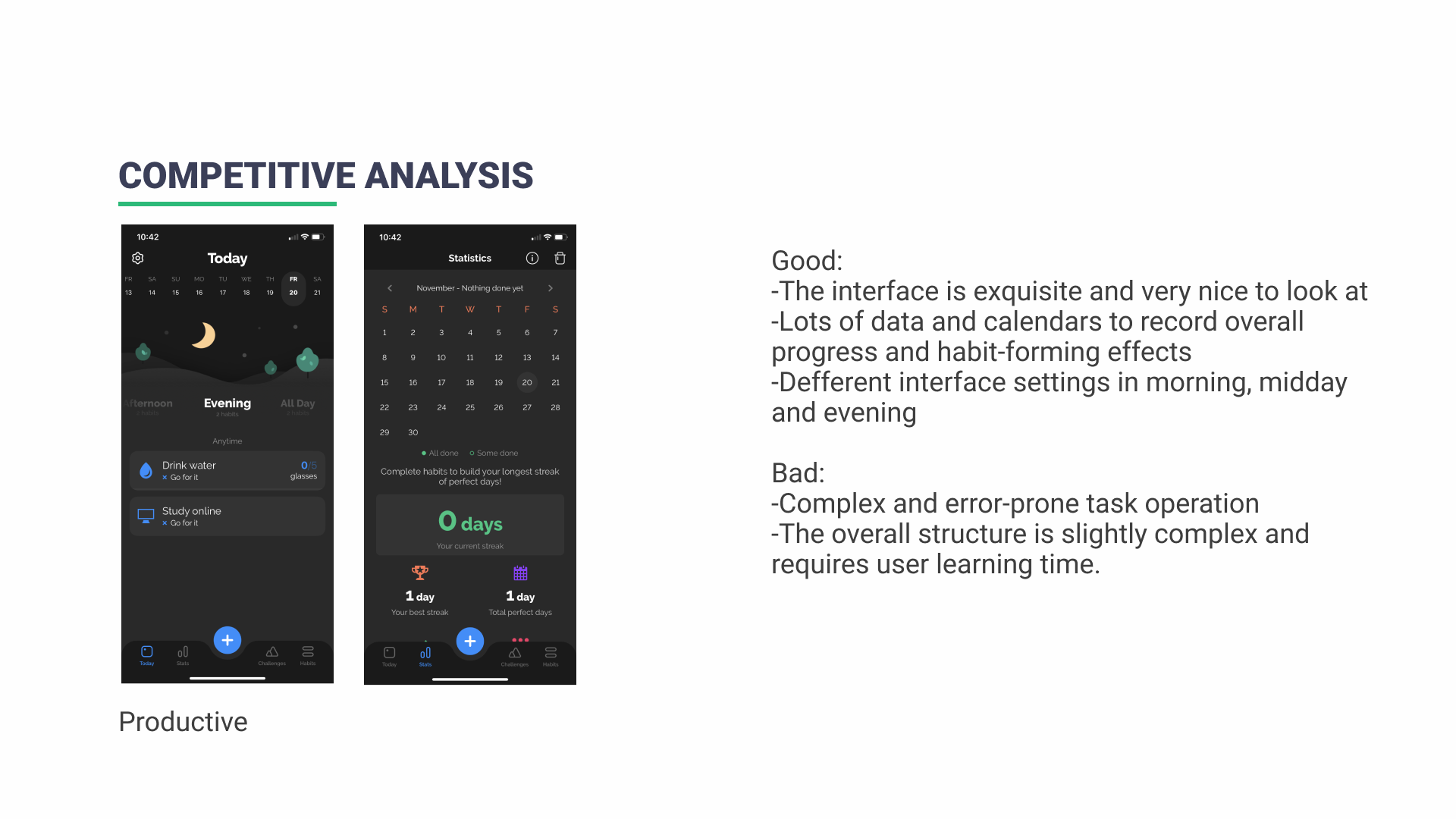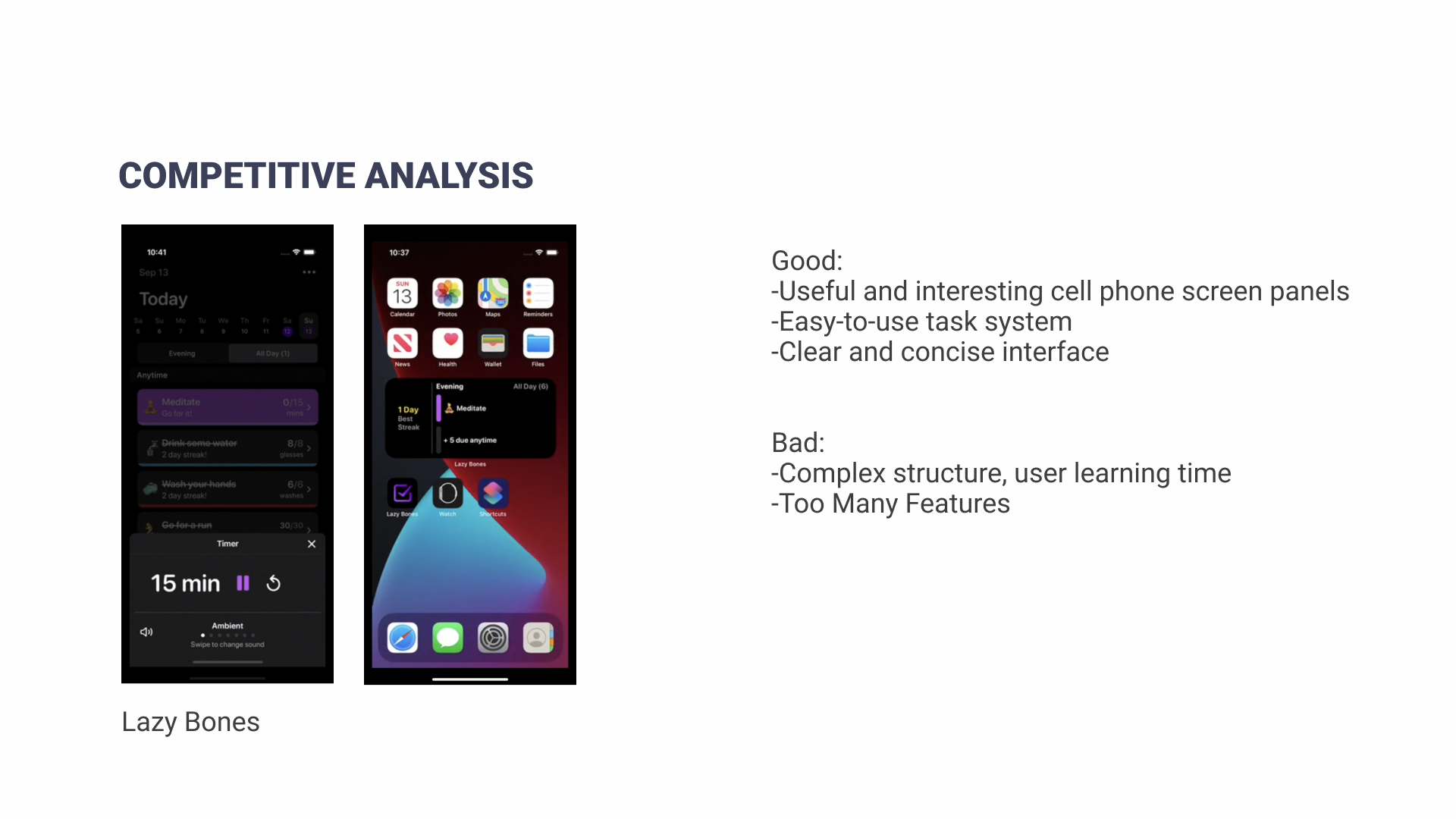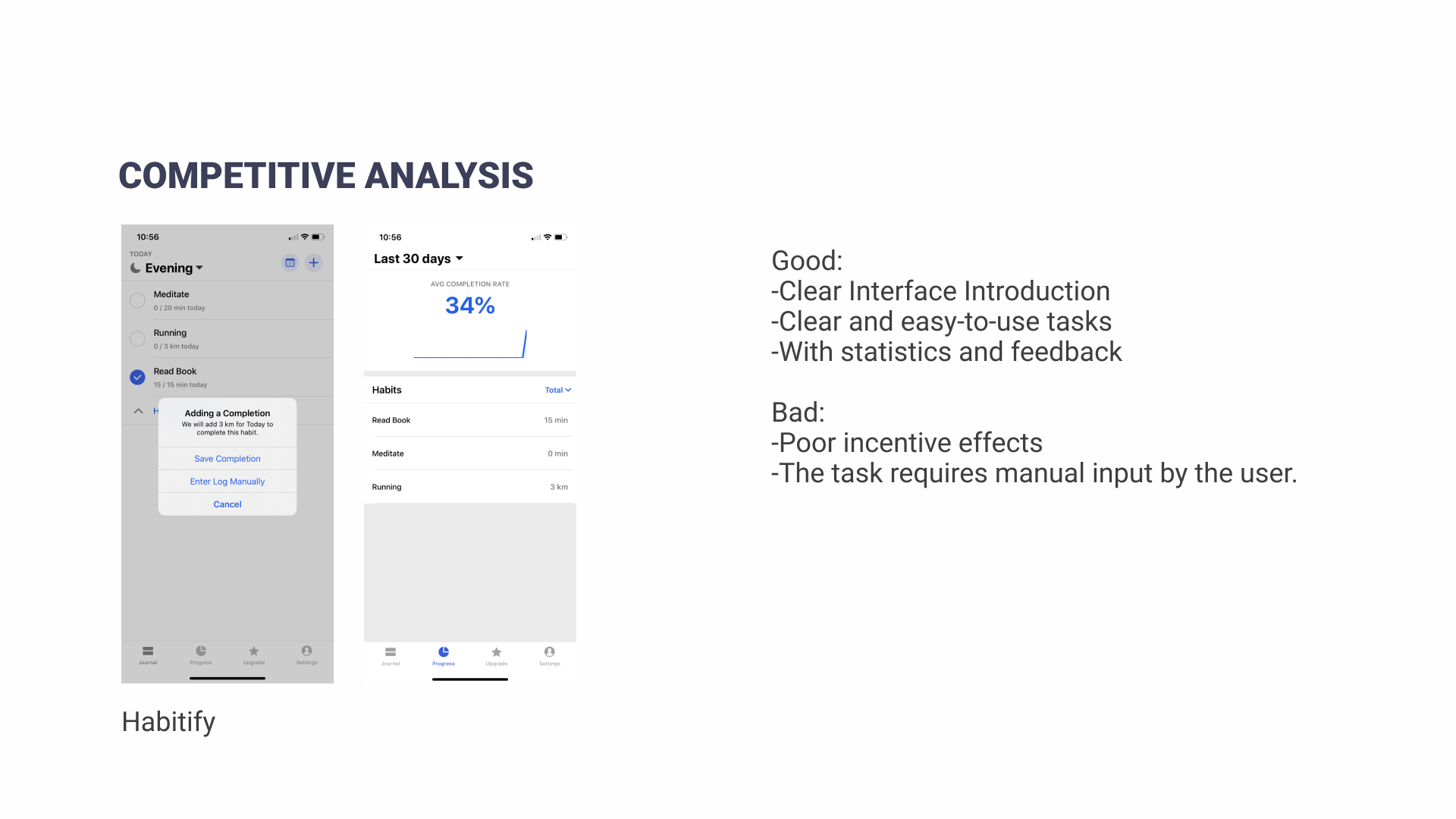PROJECT NAME
Marvelous
ROLE
UI/UX design, Research, Motion
DESIGNED BY
Jingyu Cao
COMMITTEE
Adam Smith, Mike Strobert
PROMPT
The Role of AI & Big Data in Habit Formation
PROBLEM
People feel difficult to form a habit and do not have a useful way to form a habit.
SOLUTION
Simple way to have a plan for habit formation
Users can get a detailed and complete habit formation program with simple voice communication.
Multiple types of tasks available to users
The app provides users with tasks based on its knowledge of users and analysis of their preferences. And it adjusts the tasks according to the user's requirements.
Rich task exit and pause options
When the user wants to take a break, the app offers a variety of different ways to prompt the user to continue the task.
Post-task motivation and review
Users receive different kinds of incentives, celebrations, and detailed data reviews after completing a task.
Research
I conducted several studies in order to deepen my research on users and habit-forming methods and to lay a solid foundation for my subsequent product planning ideas.
- Goal
From reading Atomic Habits An Easy & Proven Way to Build Good Habits & Break Bad Ones, Hooked How to Build Habit-Forming Products, I've come up with the following 8 goals for habit-forming products.

Trigger

Action

Reward

Investment

obvious

attractive

easy

satisfying
- Competitive Analysis





-AI &Big data
AI and big data are commonly used in many software programs to help users plan and implement their plans. But habit-forming apps rarely use this technology to help users form habits faster and better.
The most challenging problem in habit formation is to wear down the user's patience with monotonous and uninteresting day-to-day tasks. AI and big data have a role to play in analyzing and understanding the user's preferences in order to arrive at plans and tasks that are more appealing to the user. If it is learned that the user prefers to task a, then provide task a or something similar to task a to reduce user resistance, increase user interest, and encourage user participation in the task.
Persona
To understand what users need, I conducted user research such as user interviews, questionnaire surveys. Users have largely had similar experiences with habit-forming behavior. However, users seldom summarize their experiences and reflect on them, and most of them think that they only need to stick to them to form a habit. Then I conducted persona.

User scenarios
The initial usage scenario is when the user is struggling to get into good habits. For example, iris wants to get into the habit of losing weight.
Ideation
I conceive of many different solutions for the product, expecting fresh ideas from different angles. I choose the best one from the many.


Through big data and ai calculations, we analyze the tasks suitable for users and provide them with a variety of options. The user's location and the current time can be combined to provide the user with a suitable task.

Wireframe
After designing and analyzing the product, I have a clear idea of the product's structure. I designed wireframe.


Based on the wireframe, I drew an interaction flowchart with the scenario and usage flow.



Color pattern
The user becomes accustomed to the psychological expectation of a new beginning and a different life. I think green is a good way to show users that they are energetic, fresh, and happy.



Next step
Following the instruction and missions created by Marvelous, users would develop habits progressively. With this app, users can create habits in the easiest and most enjoyable way.
There are the next steps for Marvelous' future.
- More interesting incentive programs.
- Rich tasks, linked with smart home or other electronics to complete the task.
